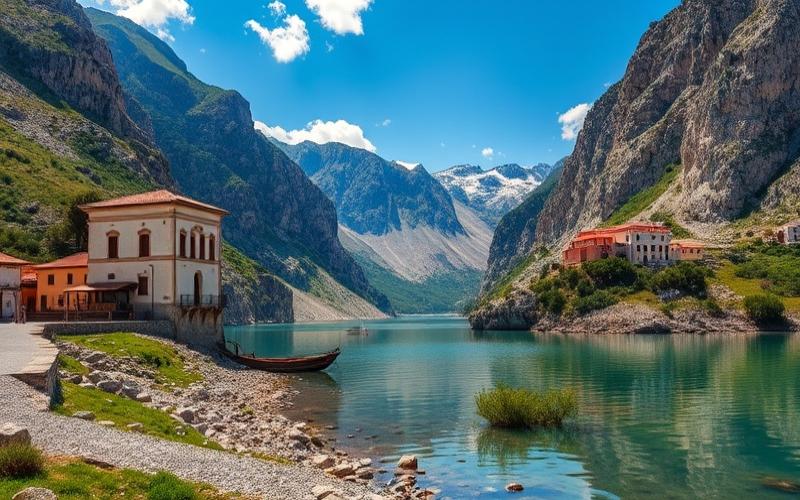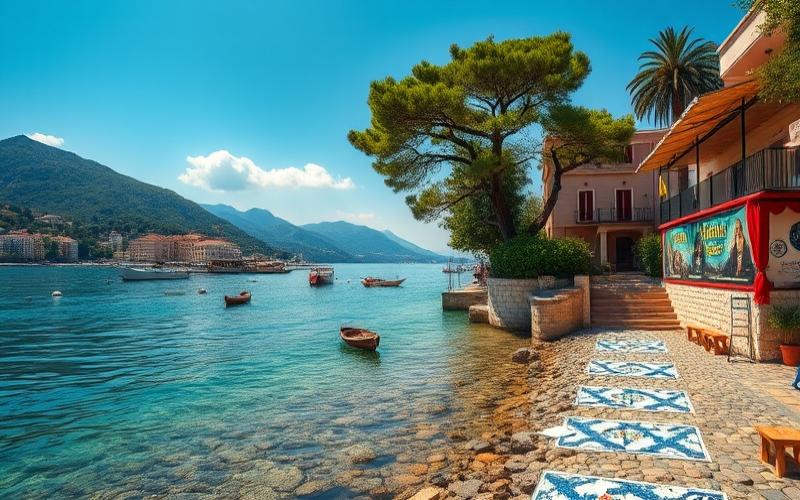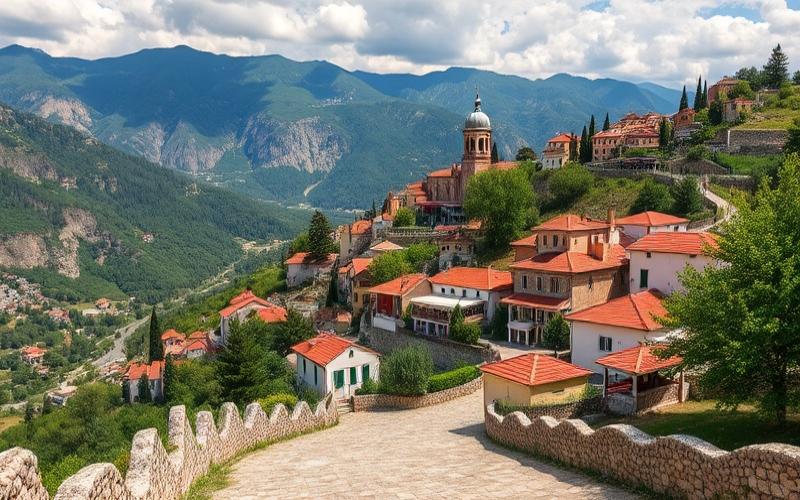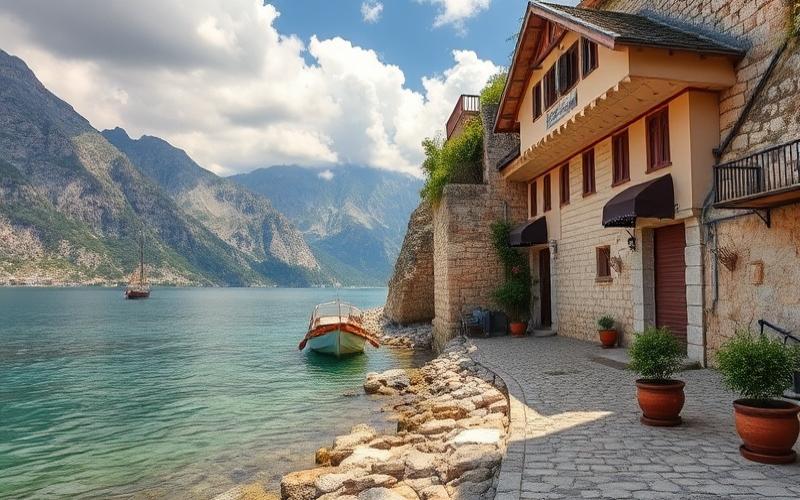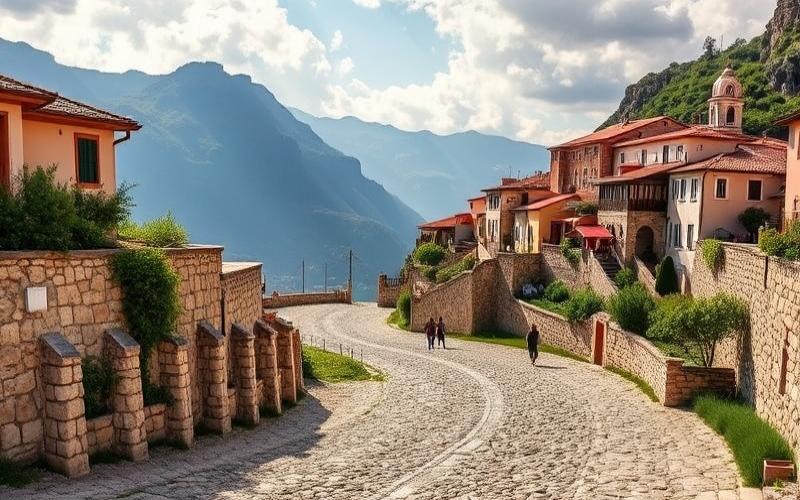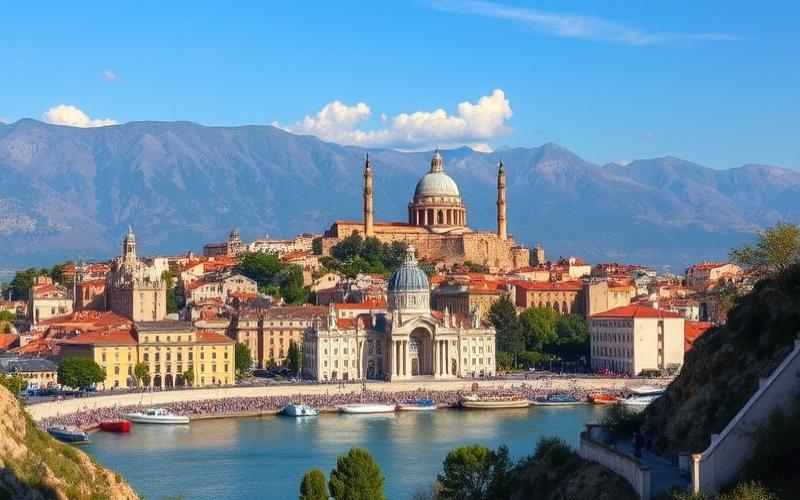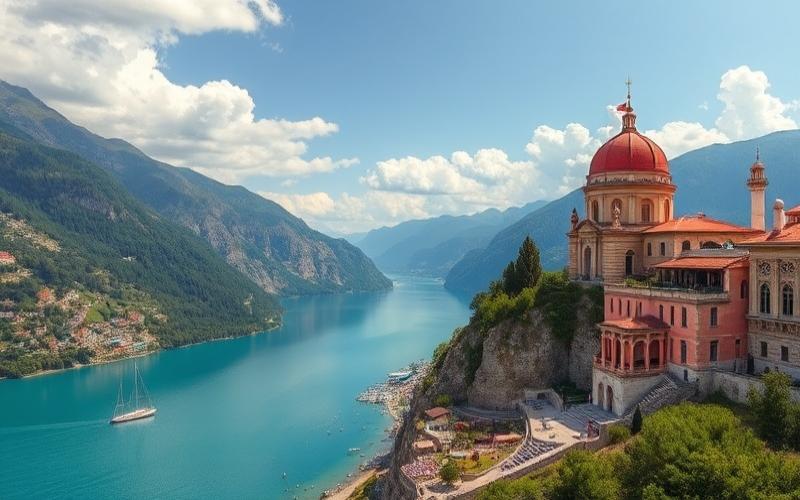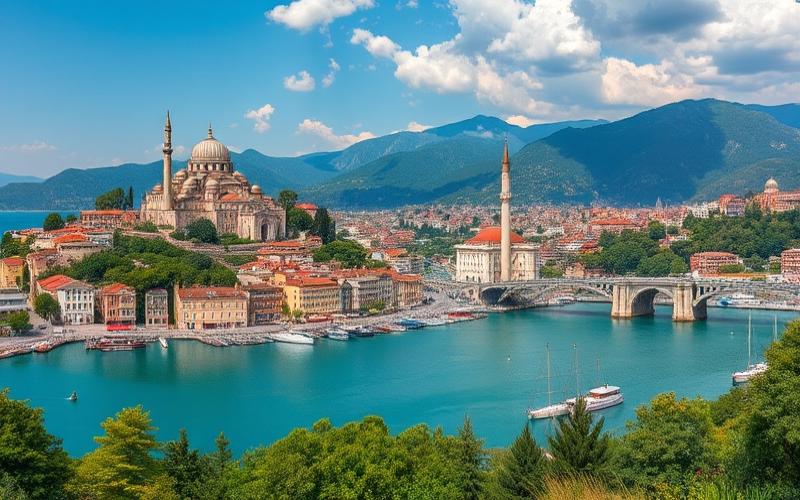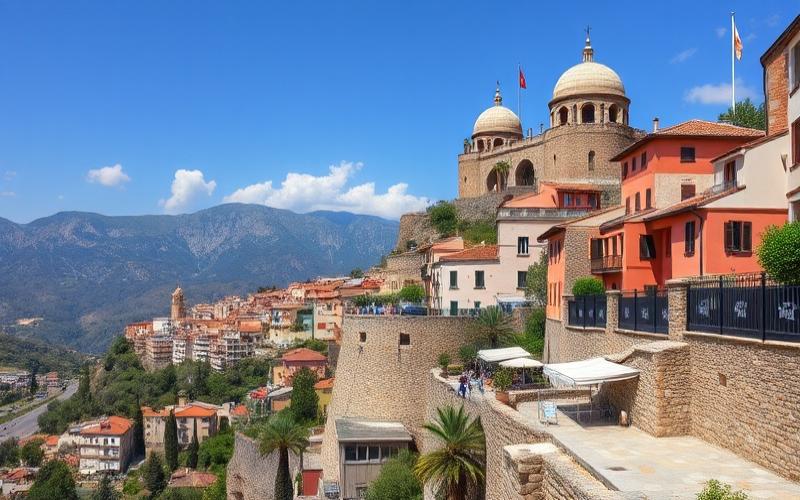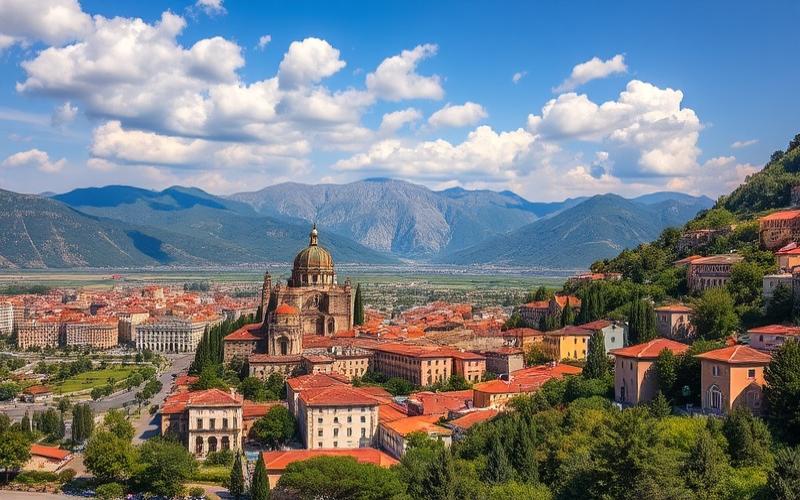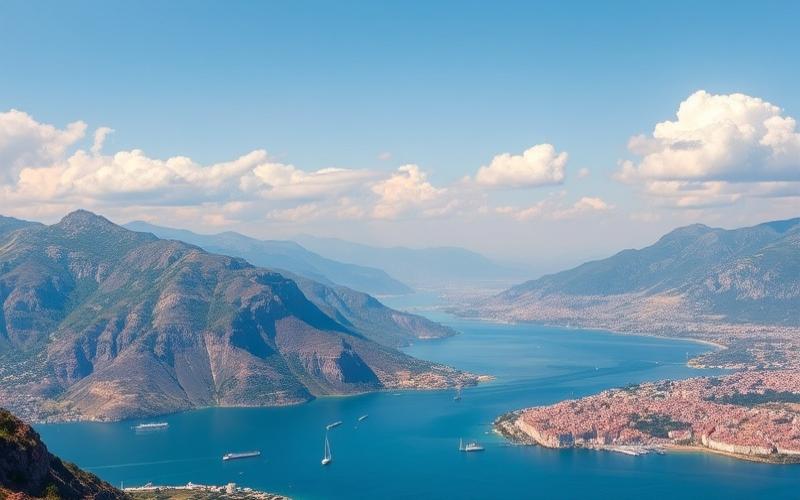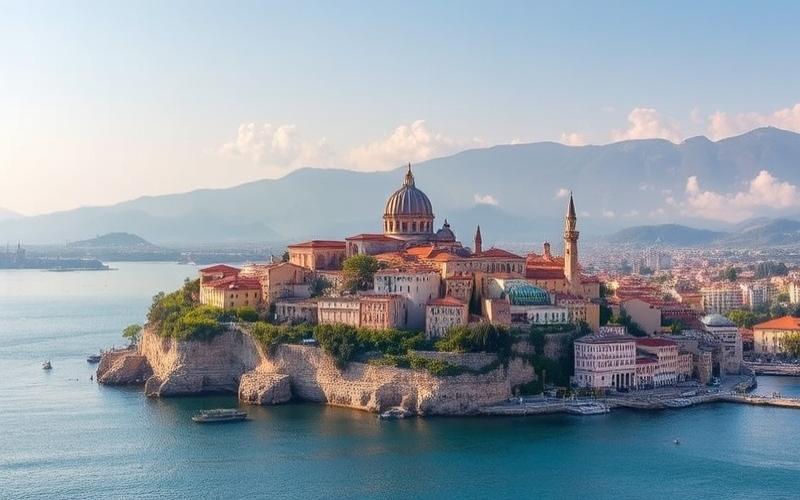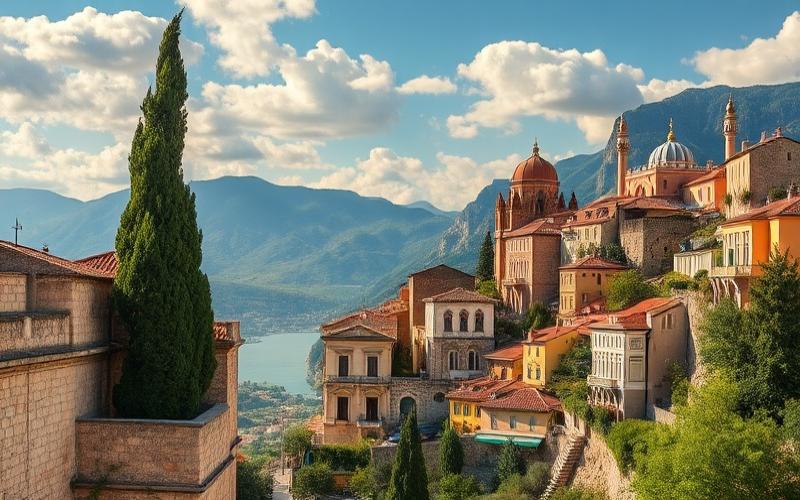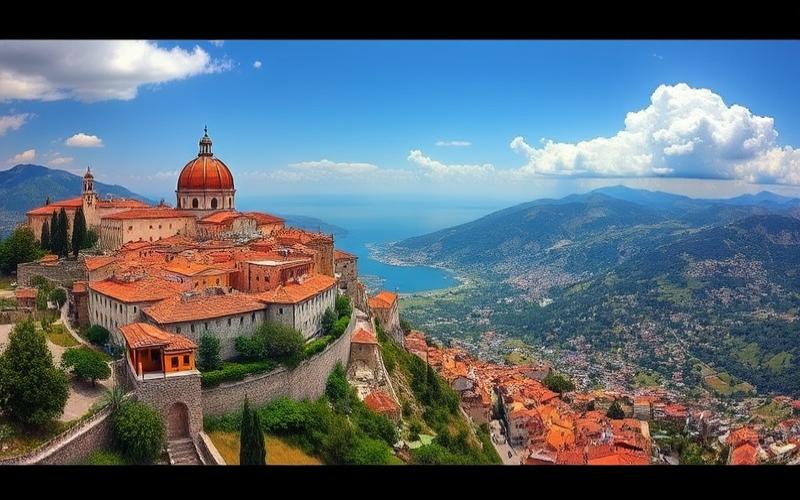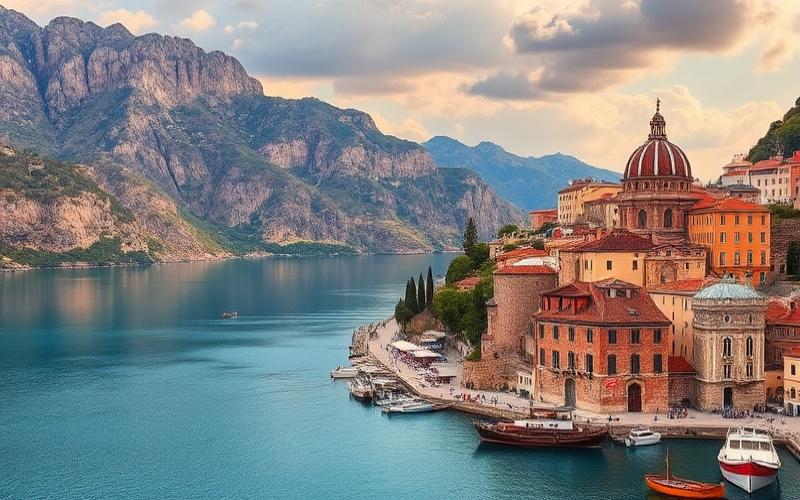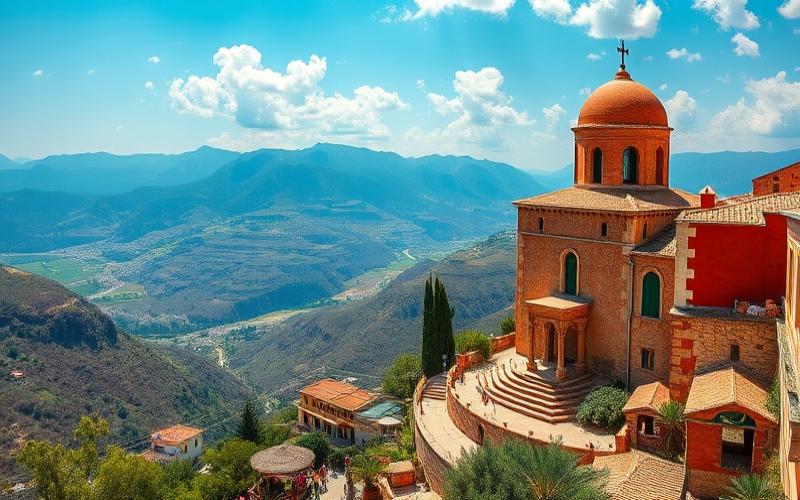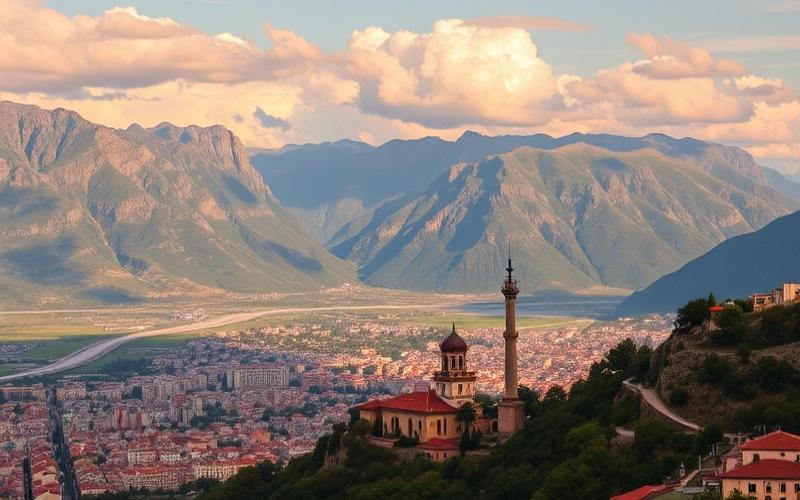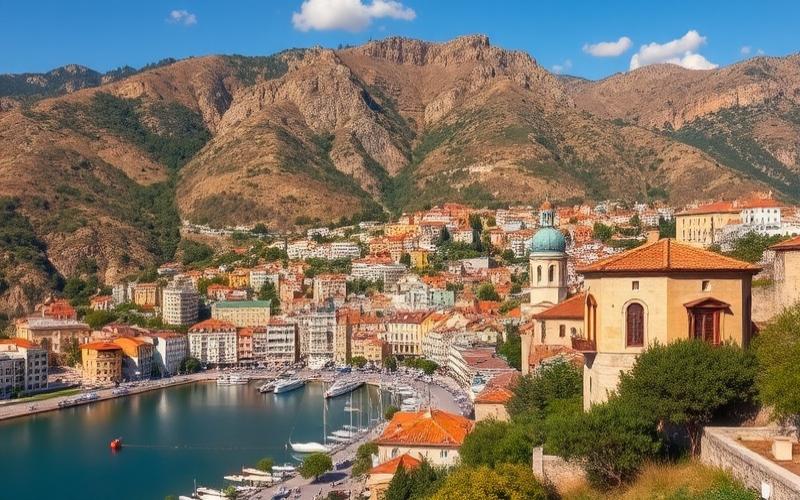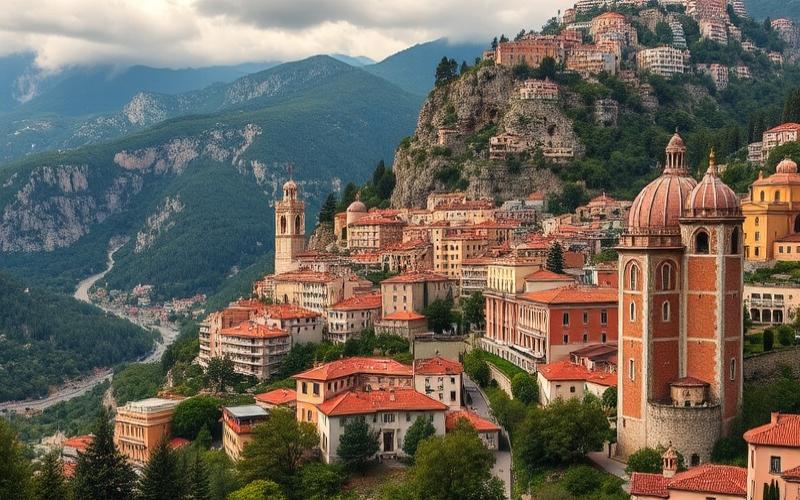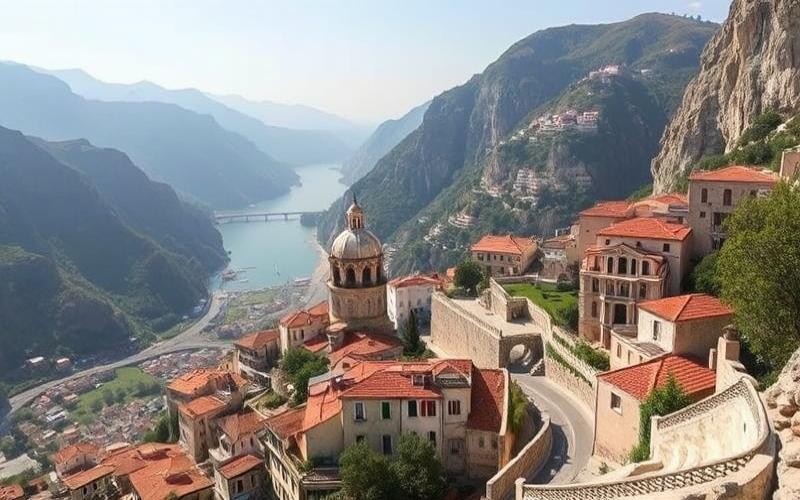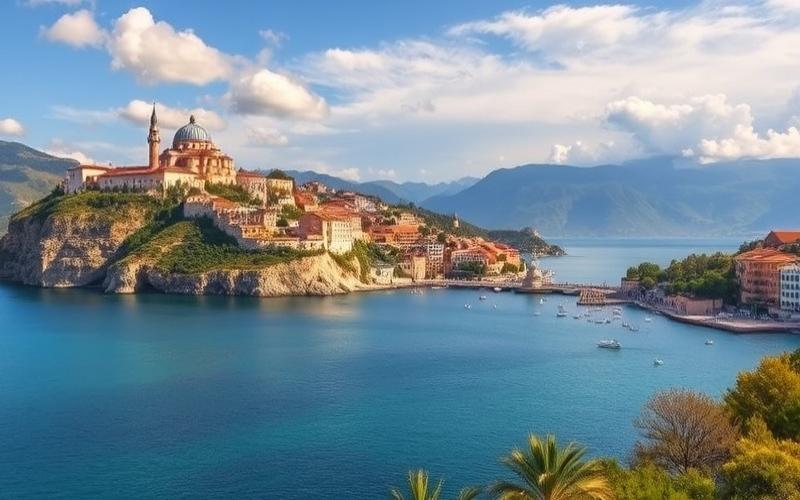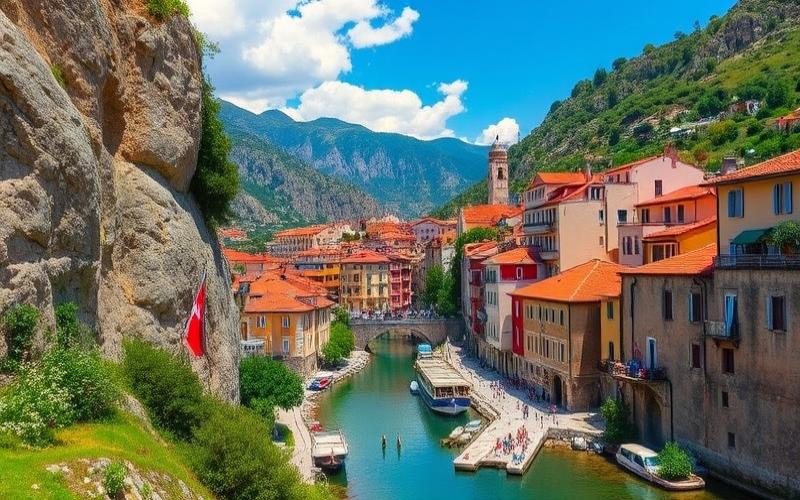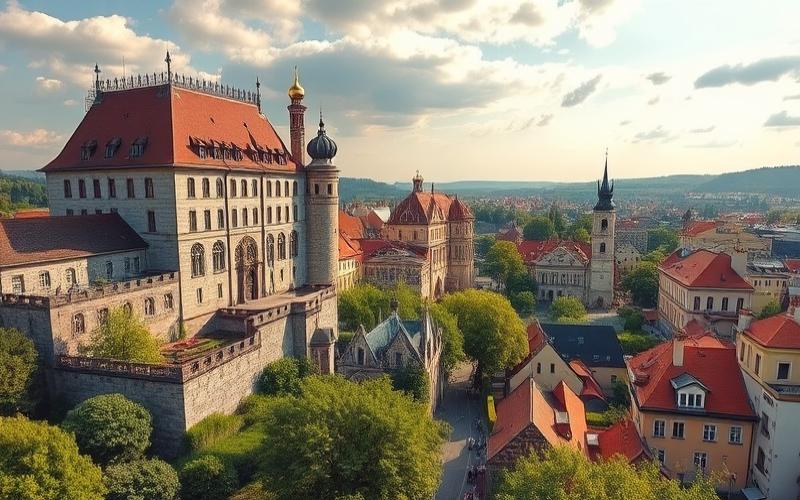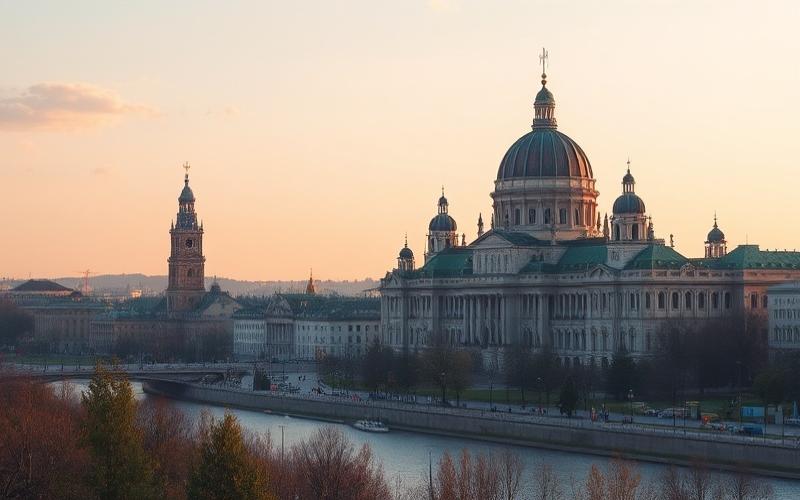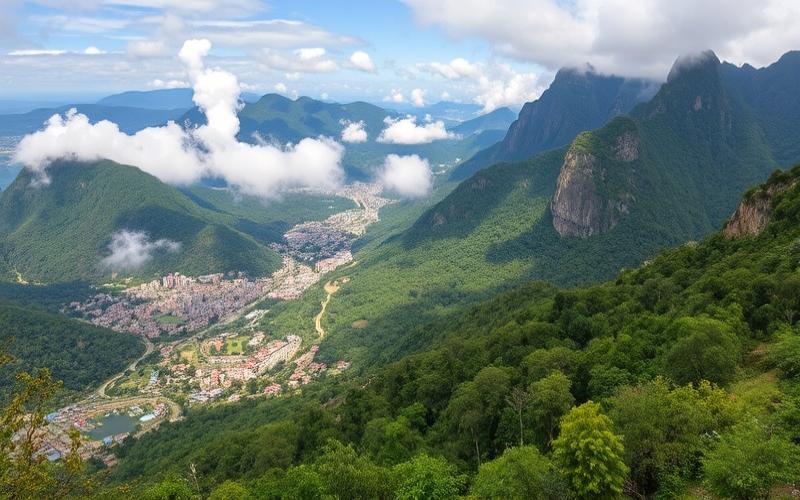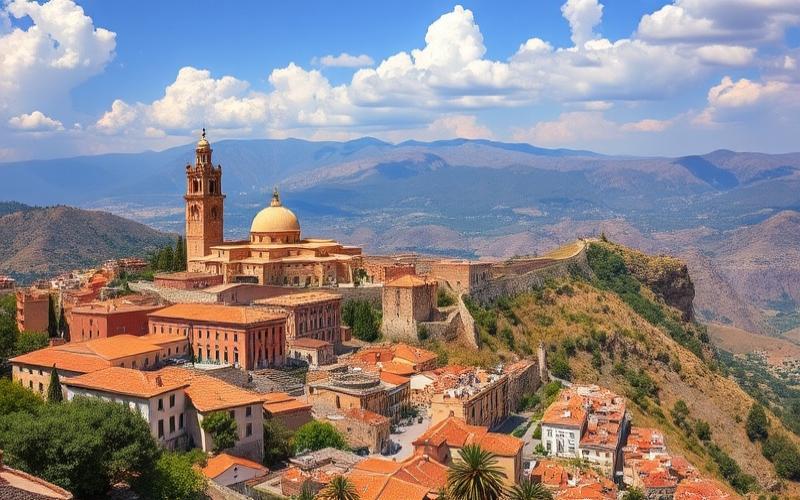
 Published on and written by Cyril Jarnias
Published on and written by Cyril Jarnias
Albania, a small country in the Western Balkans, boasts varied and contrasting geography despite its modest area of 28,748 km². Located on the eastern coast of the Adriatic and Ionian Seas, this nation fascinates with its diverse landscapes, ranging from Mediterranean beaches to alpine peaks.
Geographical Location
Albania is located in southeastern Europe, in the Balkan Peninsula. It is bordered to the west by the Adriatic and Ionian Seas, providing a 362 km coastline. The country shares land borders with several nations:
- North and northwest: Montenegro
- Northeast: Kosovo
- East: North Macedonia
- South: Greece
This strategic position makes Albania a crossroads between Western and Eastern Europe, giving it significant geopolitical importance in the region.
Topography and Landscapes
Albanian terrain is predominantly mountainous, with approximately 70% of the territory covered by mountains and hills. Three main geographical regions can be distinguished:
The Albanian Alps: Located in the country’s north, they form part of the Dinaric Alps range. This region hosts the nation’s highest peaks, including Mount Korab reaching 2,764 meters in elevation.
The Central Region: Characterized by medium-altitude mountains and fertile valleys. It notably includes the Tomorr massif, considered sacred in Albanian tradition.
The Coastal Plain: Extending along the Adriatic coast, this low-lying fertile region concentrates most of the country’s population and economic activities.
Albania also features numerous lakes, including Lake Shkodër (shared with Montenegro) and Lake Ohrid (shared with North Macedonia), which are among the largest lakes in the Balkans.
Climate
Albania’s climate is Mediterranean along the coast, featuring hot, dry summers and mild, rainy winters. In mountainous regions, the climate becomes continental with colder winters and cooler summers.
Main Cities
Tirana, the capital and largest city, is situated in central Albania. With a population of approximately 800,000, it concentrates the country’s main political, economic, and cultural institutions.
Other important cities:
- Durrës: Second-largest city and main seaport
- Vlorë: Major tourist center on the Ionian coast
- Shkodër: Historic city in the north
- Elbasan: Industrial center in the central region
- Korçë: Cultural city in the southeast
Administrative Regions
Albania is divided into 12 counties (qarks), which are further subdivided into municipalities. The main regions are:
- Tirana Region
- Coastal Region (Durrës, Vlorë)
- Northern Region (Shkodër, Kukës)
- Central Region (Elbasan, Berat)
- Southern Region (Gjirokastër, Korçë)
Natural Resources
Despite its small size, Albania possesses varied natural resources. The country has deposits of oil, natural gas, coal, chromium, copper, and nickel. Forests cover approximately 36% of the territory, constituting an important timber resource.
Good to Know:
Albania, despite its modest area, offers surprising geographical diversity. From Mediterranean beaches to alpine peaks, through picturesque lakes and historic cities, the country presents a condensed version of Balkan landscapes within an easily explorable territory.
Environmental Challenges
Albania’s geography presents certain environmental challenges. Deforestation, soil erosion, and water pollution are major problems. The country is also vulnerable to earthquakes due to its geological situation.
However, efforts are underway to preserve the country’s unique biodiversity. Albania features several national parks, including Llogara National Park in the south and Theth National Park in the Albanian Alps.
Tourism Potential
Albania’s varied geography offers significant and still largely untapped tourism potential. The beaches of the Albanian Riviera, archaeological sites like Butrint, historic cities such as Berat and Gjirokastër (both UNESCO World Heritage sites), along with the mountain landscapes of the Albanian Alps are attracting increasing numbers of visitors.
Good to Know:
Albania’s geographical diversity makes it an ideal destination for nature and adventure enthusiasts. In a single day, it’s possible to travel from Mediterranean beaches to alpine peaks, offering a unique travel experience in Europe.
In conclusion, Albania’s geography, characterized by its diversity and contrasts, plays a crucial role in the country’s development. It shapes not only its economy and tourism but also the identity and culture of its inhabitants. As Albania opens up increasingly to the world, its unique geography becomes a major asset for its future development.
Disclaimer: The information provided on this website is for informational purposes only and does not constitute financial, legal, or professional advice. We encourage you to consult qualified experts before making any investment, real estate, or expatriation decisions. Although we strive to maintain up-to-date and accurate information, we do not guarantee the completeness, accuracy, or timeliness of the proposed content. As investment and expatriation involve risks, we disclaim any liability for potential losses or damages arising from the use of this site. Your use of this site confirms your acceptance of these terms and your understanding of the associated risks.

